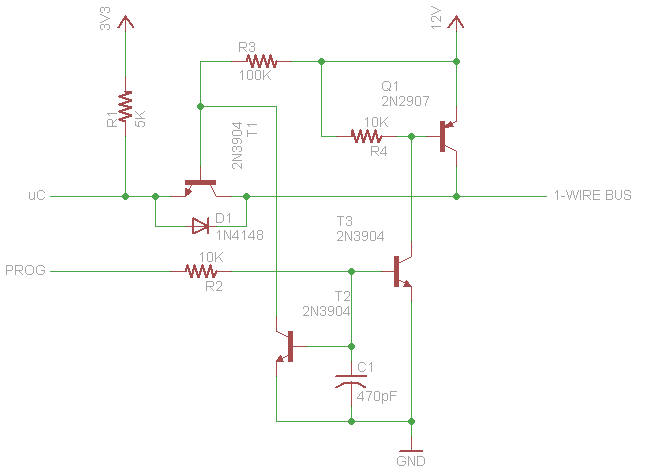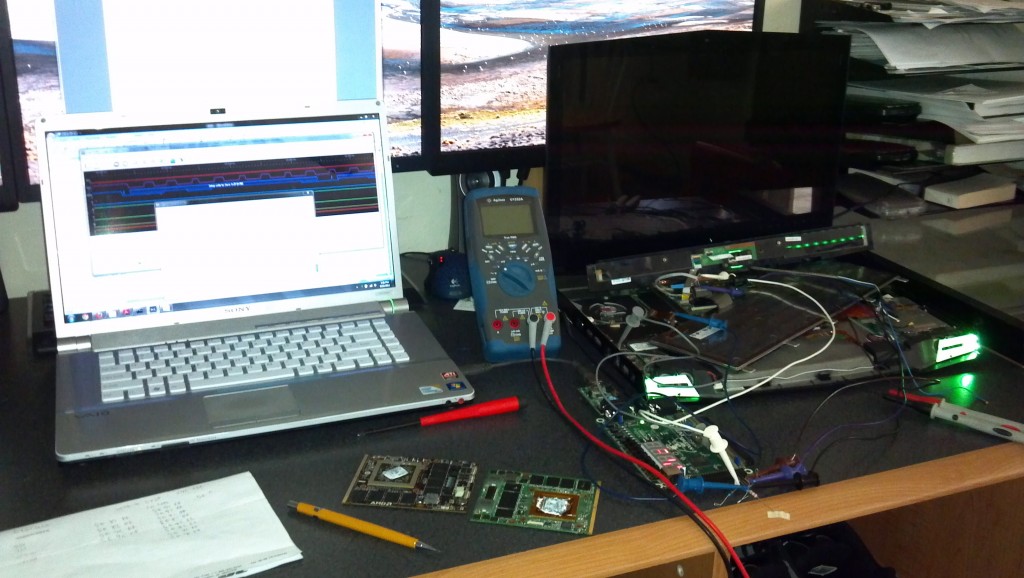Archive for October, 2012
330 Watt power supply for Alienware M17x
I successfully managed to modify the M18x 330W power supply to work in the M17x, which allows for running the M17x with a fast processor and SLI / crossfire. [Update: some people are having issues with the 330W PS running a 920XM processor with 7970m CrossfireX. This combination draws more than than 330W in the M17xR2 for some reason. I have an 840QM and 6990m CrossfireX with no issues, about 200W average] The modification is easier if you already have a 240W power supply, since you will already have the DS2502 1-wire EPROM that is required for the mod. If you don’t have a 240W supply you can also order a DS2502 and program it manually with the 1-wire programmer I posted here. › Continue reading
mbed 1-wire EPROM driver (DS2502)
I wrote some code for my mbed to read and program the memory contents of 1-wire EPROMs like the DS2502. It should work with any device that responds to the same commands. The code can read ROM, status registers and memory pages, and write to the status register and memory pages. I also incorporated support for cyclical redundancy checks since the devices aren’t erasable. I had to build an external circuit for the 12 volt programming pulse to protect the mbed signal pin. If you only need to read you don’t need this, but it is required if you want to program data. Download link to the project source files is below.
M17x inverter brightness fix
After I killed my original motherboard modifying stuff in my 6970m quest, the brightness of my LCD was stuck at low with both the new R1 and R2 motherboards. The function keys couldn’t adjust brightness and neither could windows. Here’s how I fixed it. This is probably only valid for a CCFL backlit display.
The inverter that drives the fluorescent lamps in my display is based on a MAX8759. This chip has an SMBus interface as well as an ambient light sensor interface and a PWM input. The motherboard uses the SMBus interface to control the inverter. You can directly write values to a brightness register, from 0x00 to 0xFF for minimum to maximum brightness. The function keys send incrementally smaller or larger values to the controller. I pulled out my logic analyzer, mbed, and realterm to watch the bus communication and communicate with the inverter controller.
The communication from the EC to the inverter controller is correct, and you can read the brightness register and see the values change based on the function keys. However the brightness continues to stay low. You can also read the fault register, but no faults were present in my case.
What I figured out was the controller by default uses a mode called “SMBus with DPST”, which takes the SMBus brightness value and multiplies it by the PWM duty cycle. This apparently allows another interface to use the PWM input and dim the display without needing to access the bus. The problem was the PWM duty cycle from the EC was 0%, so the controller kept the brightness at 0 regardless of the SMBus setting. › Continue reading
6970m power issues
I was recently working on getting an AMD 6970m working in an R1 M17x. I didn’t get it working, but that’s probably largely due to the fact that I was testing with a bad card.
When the computer powers on, before it POSTs, it applies voltage to the three power rails for the graphics card. The graphics card is supposed to turn on its regulators and when things stabilize assert the MXM power_good signal. This happens before any signals are applied to the card’s busses. However if one of the regulators is out of spec, the power_good signal remains low and the computer will not even start POST so you won’t get any error codes, just a black screen.
I looked up the datasheets for the card’s two main regulators and measured the voltages produced. The regulator that I think probably runs the memory chips (APL5913) was spot-on but the regulator for the core (ISL6228) was off by about a tenth of a volt. Hence the failure to release power_good and continue boot. › Continue reading
Other Stuff
Recent Posts
- 6CY7 dual triode valve amplifier
- Air quality sensor (TVOC and eqCO2)
- Automotive rear fill “surround sound” with Boss DD-3
- Spring tester / weight scale
- Ducati 749/999 Tail Light
- Instruments for the GSXR
- Light pipe tail light for the GSXR
- M17x 6990m / 6970m overheating
- PAR / Spectrum analyzer
- Acrylic polishing and scratch removal
Archives
- May 2019 (2)
- April 2017 (3)
- October 2015 (1)
- May 2015 (1)
- March 2014 (2)
- December 2013 (1)
- July 2013 (1)
- November 2012 (1)
- October 2012 (4)
- September 2012 (1)
- August 2012 (3)
- June 2012 (1)
- March 2012 (1)
- February 2012 (1)
- January 2012 (1)
- October 2011 (3)
- July 2011 (1)
- June 2011 (3)
- May 2011 (2)
- April 2011 (1)
- December 2010 (1)
- August 2010 (1)
- July 2010 (3)
- April 2010 (2)
- March 2010 (2)
- January 2010 (2)
- December 2009 (2)
- October 2009 (2)
- September 2009 (1)
- August 2009 (15)



